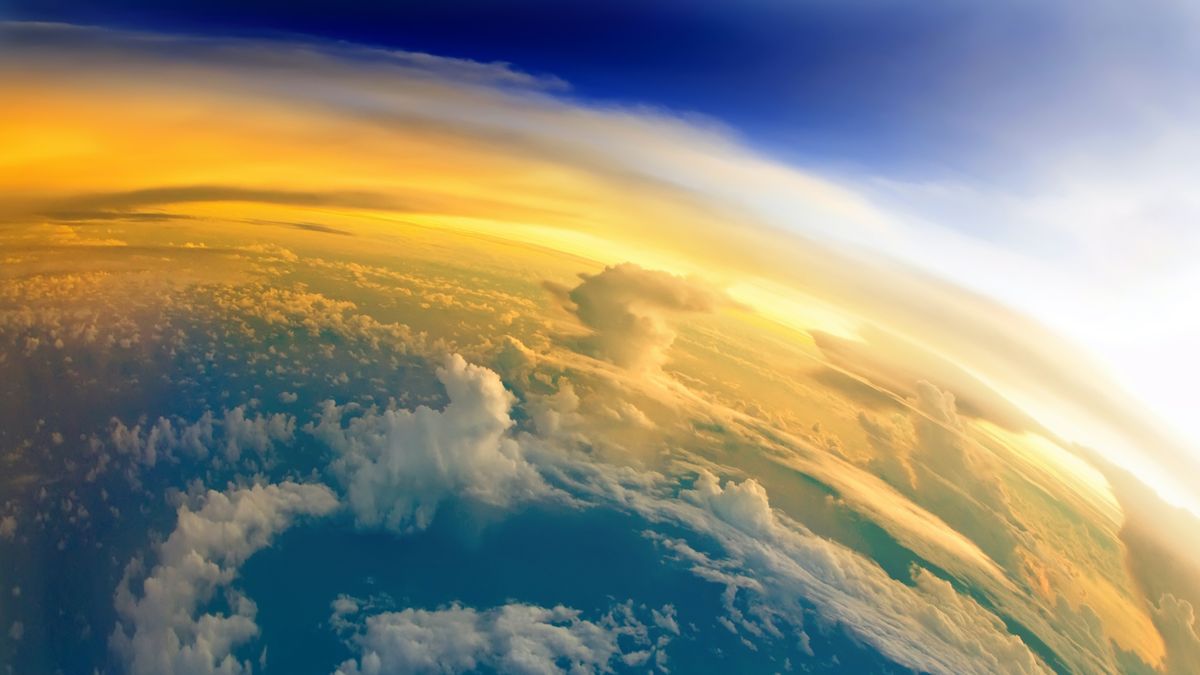
Earth is often dubbed the "blue planet" due to its plentiful supply of water. Unlike on other bodies in the solar system — and likely beyond on exoplanets — liquid water is abundant on Earth, and its presence has allowed millions upon millions of species to evolve and flourish. About 71% of Earth's surface is covered with water, and a colossal 96.5% of the planet's water supply is found in the oceans, according to the U.S. Geological Survey (USGS). But water doesn't just stay down below; as a part of the water cycle (also called the hydrologic cycle), it travels up to the atmosphere.
So, how much water is in the atmosphere at any one time? How much is above our heads right now, and if all of it were to fall at once, what impact would it have?
Quite simply, there's billions of gallons of water — mostly in the form of vapor — in the skies right now, and if it all fell at once, it would cause some major problems for millions of people.
Related: Why does Earth have an atmosphere?
According to the USGS, the volume of all water on Earth is estimated to be almost 332.5 million cubic miles (1.4 billion cubic kilometers). To put that into context, 1 cubic mile of water would contain approximately 1.1 trillion gallons — enough to fill 1.66 million Olympic-size swimming pools.
As a result of the hydrologic cycle, Earth's water is never in one place for too long. It evaporates, turns to vapor, condenses to create clouds and falls back to the surface as precipitation. The cycle then begins again.
Evaporated water remains in the atmosphere for around 10 days, according to Britannica. This means the atmosphere is literally awash in water vapor.
"On average, there is about the equivalent of 30 mm [1.2 inches] of rain in the form of vapor available to fall over any point of Earth's surface," Frédéric Fabry, the director of the J. Stewart Marshall Radar Observatory and an associate professor of the environment and the Department of Atmospheric and Oceanic Sciences at McGill University in Canada, told Live Science in an email.
"That's around 55 pounds [25 kilograms] of water over every square yard, most of which is in the form of vapor," he said.
Given that the surface area of Earth is about 197 million square miles (510 million square kilometers), there's around 37.5 million-billion gallons of water in the atmosphere, Fabry said. If all of this mass were to fall at once, it would raise the global ocean level by about 1.5 inches (3.8 centimeters), he added.
Though all of this vapor falling at once is incredibly unlikely, such a dramatic rise in sea level would likely have dire consequences. According to the Climate Change Post, if global sea levels rise by just 2 inches (5 cm), low-lying cities, such as Mumbai and Kochi, India; Abidjan, Ivory Coast; and Jakarta, Indonesia — which have a combined population of over 28 million and are already vulnerable to coastal flooding — would be "significantly affected."
Additionally, according to a 2017 study published in the journal Scientific Reports, if sea levels rise between 2 and 4 inches (5 and 10 cm), it will double the flooding frequency in a host of regions, "particularly in the tropics."
Related: How will sea levels change with climate change?
If all the water in the atmosphere were to somehow spontaneously cascade down, it wouldn't fall evenly around the world. That's because some areas of Earth are wetter than others.
"The amount of water in the atmosphere is controlled by the balance between the flow going into the atmosphere and the flow going out of it," Fabry said. "The flow going in the atmosphere is controlled by evaporation from the surface, and that depends on whether there is water at the surface, as well as on temperature. Evaporating water requires a lot of energy, and that energy comes from the warmth of the surface. Warm oceans are where evaporation is the greatest, and Arctic land areas are where it is the smallest."
The average amount of water in the atmosphere varies with season and location, but broadly speaking, "tropical oceans and wet tropical areas have the most water vapor over them, and these move with seasons; Arctic land areas or high-mountain areas have the least," because warm air is far better for carrying water, Fabry said.
Other factors at play include geology and topography, such as sloping terrain, which affects how quickly air moves up into the atmosphere, where it cools. As a result, upwind regions of mountainous areas "get more than their share of precipitation," Fabry said. This partly explains why Seattle, a city that sits near the Cascade Range, gets so much rain, according to the USGS.
Notably, climate change is liable to affect the amount of vapor in the atmosphere in the decades to come. "If temperatures get warmer, evaporation from the surface will increase, and so will the amount of water in the atmosphere," Fabry said.
As a result, global warming could conceivably speed up. Water vapor is a very effective greenhouse gas, and when more of it is in the atmosphere, it will contribute to warming and enhance the greenhouse effect.
Originally published on Live Science.
"much" - Google News
January 10, 2022 at 07:00PM
https://ift.tt/3GsETzD
How much water is in Earth's atmosphere? - Livescience.com
"much" - Google News
https://ift.tt/37eLLij
Shoes Man Tutorial
Pos News Update
Meme Update
Korean Entertainment News
Japan News Update
Bagikan Berita Ini














0 Response to "How much water is in Earth's atmosphere? - Livescience.com"
Post a Comment